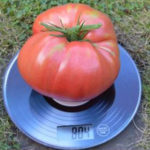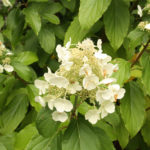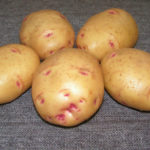Rose Empress Farah (Imperatrice Farah)
Roses from the French enterprise Delbar appeared in Russia relatively recently. And they immediately conquered the flower growers with their charm. Delbar's varietal collection is divided into several memorable series. One of them - Great Flowers, includes a hybrid tea variety with a unique flower color, whose name is Empress Farah.
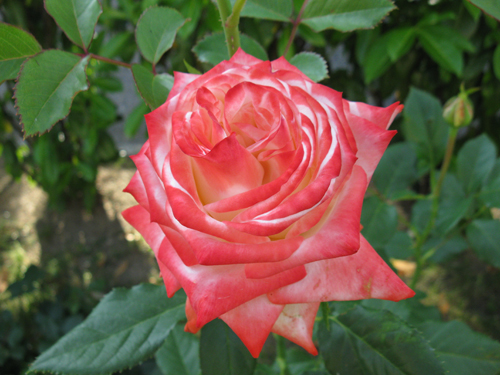
History of creation
The name of this beautiful rose has an interesting background. In 1967, for the first time in 2500 years of the existence of the Persian monarchy, a woman was crowned - the third wife of the Iranian Shah Reza Pahlavi. Her name is Farah Pahlavi and she is one of the most beautiful and charismatic women in the world. It was thanks to her that Iranian women stopped hiding their faces and hands. She stood at the origins of the creation of orchards in the north of Iran. Thanks to this never-realized project (the revolution prevented), in 1974, Farah met the French rose grower Delbar. A few years later, the queen, who was in exile, was unexpectedly met by the son of Georges Delbar, Henri, who invited her to visit the nurseries and rose gardens belonging to their family. It was there that Farah Pahlavi was asked to give his name to one of the roses that had unusual qualities.
The variety has been grown in nurseries for several years. In 1986 it was known as Strawberry Parfait. But it was presented to a wide circle of professionals and amateurs only in 1992 under a new name - Imperatrice Farah. The registration name is DELivour. In the flower market, Empress Farah is also known under other names - Empress Farax, Kaiserin Farax.

Awards
During its short history, the royal rose managed to win 8 medals, including the Gold Awards in Geneva and Rome, the Silver Medal and the Casino Prize in Baden-Baden. In 1995, she was awarded the title "Crystal Rose" in Orleans. In 1998, 1999 - the title of "Queen of Show" at the competitions of the American Rose Society AARS.
Description
The shape of the bush is strictly vertical, gradually expanding from bottom to top. The plant often reaches a height of 150 - 200 cm and a width of 80 - 120 cm. Shoots are powerful, moderately thorny. Spines with a wide base, straight, growing with a slight slope towards the bottom. The bush of Empress Farah is dense due to good shoot formation and is quite leafy, looks powerful and durable. Leaves are closer to large size, glossy. The leaf blade is straight, juicy, delicate to the touch, light green; along the edge, a thin dark crimson border can be observed, especially noticeable on young foliage. On each shoot, one bud is formed, very rarely a brush of 5 flowers may appear.
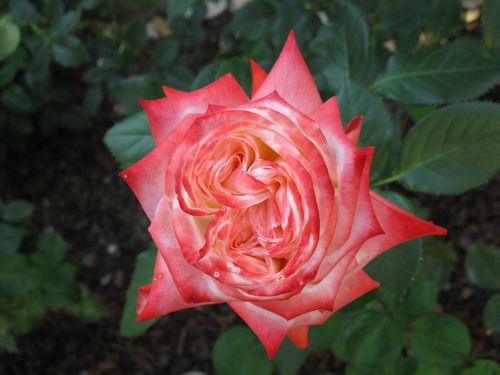
The rosebud is flawless and slender, as befits a royal person, with a classic goblet shape. The petals are white with pale crimson edges, folded very tightly, therefore, as they dissolve outward, only the painted edges are bent outward, twisting back, they form rather sharp tips. The reverse side of the petals is silvery. The flower of the Empress Farah is terry, cup-shaped, rather large - 12-13 cm in diameter, consists of 17-25 tightly packed petals. Even in full disclosure, the middle is tightly closed, so the center is slightly raised above the open petals. At any stage of dissolution, the bud looks incredibly beautiful and elegant, allowing you to admire the smooth transition from white to crimson. The brightness of the color depends on the weather, the season, the degree of shading. Therefore, the edges of the petals can be saturated, crimson red (carmine red) or, conversely, light crimson. Towards the end of the flowering period, the bright colors fade, and the rose flower becomes almost white.
Flowering period
Empress Farah is a re-blooming species. The flowering period is quite long - it begins in June and lasts until the onset of stable cold weather. But, according to reviews, the break between the first and second waves cannot be called short.According to rose growers, the second wave of flowering is even more abundant than the first, but the first has noticeably larger flowers. A blossoming bud keeps its shape for 10 days, but, according to observations, it fades faster in hot weather, in cool weather it lasts longer.
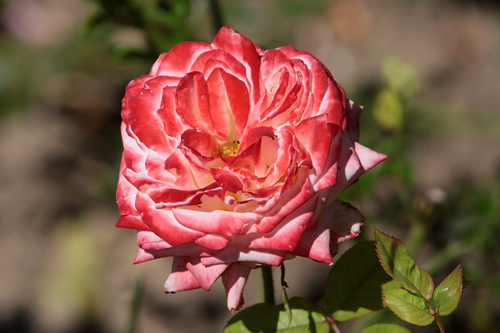
Characteristics
- The first flowering of Empress Farah can be observed already in the second year after planting;
- The aroma cannot be called strong, it can be felt at a short distance from the flowering bush, and in the first half of the day the smell is stronger, and in the evening its intensity weakens. The scent is rather fruity, combining delicate aromas of rose and pear;
- although the variety is thermophilic, it is quite capable of withstanding a drop in winter temperatures down to -23.3 ° C, which corresponds to zone 6, according to the US Department of Agriculture (USDA). Imperatrice Farah will feel most comfortable in the winter in the Caucasus, Crimea, Krasnodar Territory. In cooler regions, the bushes will have to be insulated;
- the immunity of the variety is very high, the plant is especially resistant to powdery mildew and black spot. But it can suffer from rust;
- of insects, aphids are the most troublesome;
- The Empress Farah's resistance to moisture is very high, the flowers do not get wet and do not deteriorate, they do not rot even during prolonged rains. Although there are also opposite reviews in this regard. Rose growers note that if it rains for more than 2 days, then the flowers collect water, become heavy and the shoot bends under their weight. Young rosebuds can break if you try to shake off moisture from them;
- with prolonged bad weather, slight spotting may appear on the outer petals, due to which the flowers lose their bouquet attractiveness;
- the variety proved to be excellent in cutting - the leg is long, strong, the flower does not lose its attractiveness for a week, and even a little longer.
Planting and agricultural technology
As befits a royal person, Empress Farah is a rather capricious plant. Prefers autumn planting. The place on the flower bed should be well lit, protected from strong winds, but at the same time slightly blown. Loose and nutritious loams are suitable from the soil. In heavy and cold clay soils, the rose is sick and does not show its decorative effect. If the site is often flooded, then a thick layer of drainage should be laid on the bottom of the planting pit - broken brick or large expanded clay. Watering should be infrequent, but abundant. Mandatory treatment for diseases and pests. It is not recommended to leave faded flowers on the bush, this inhibits the development of new buds. Thinning pruning is a must, it reduces the risk of developing fungal diseases. In the spring, old, broken and frozen branches are removed. In warm climates, pruning can be done shorter, in cooler climates - by about 1/3. If the winter is snowless and very cold, be sure to insulate the plant - mulch the trunk circle with dry earth, cover the bush with spruce branches or any non-woven material.
Empress Farah is a real decoration of any flower garden. But choosing neighbors for a royal person must be very careful so that they serve as a background against which the unusual color of the variety will sparkle like a well-cut diamond. Among the disadvantages are thorny shoots. Before purchasing a variety, you should make sure that the climate of your region is suitable for a rose and if you can provide a beauty with decent care.
